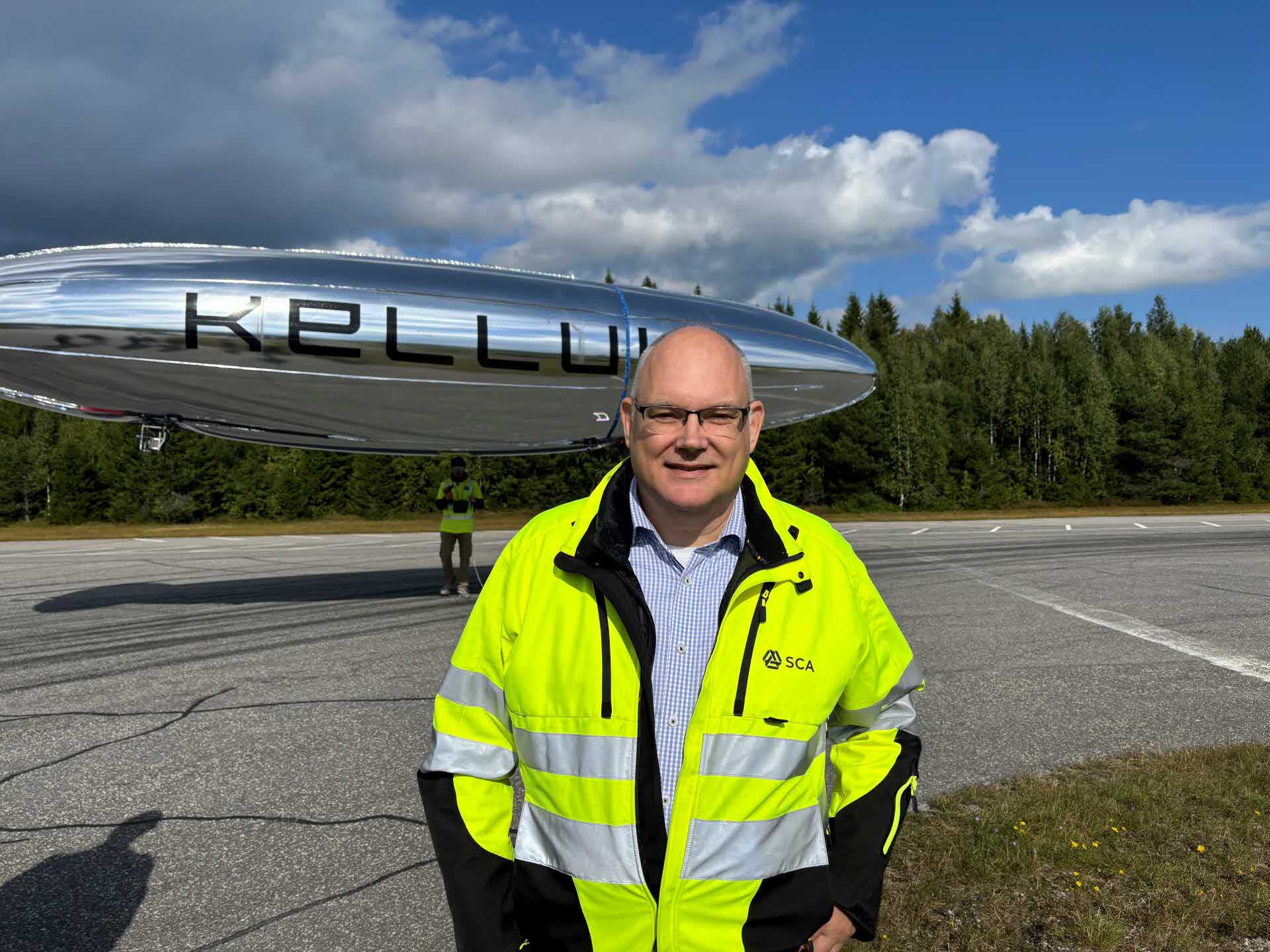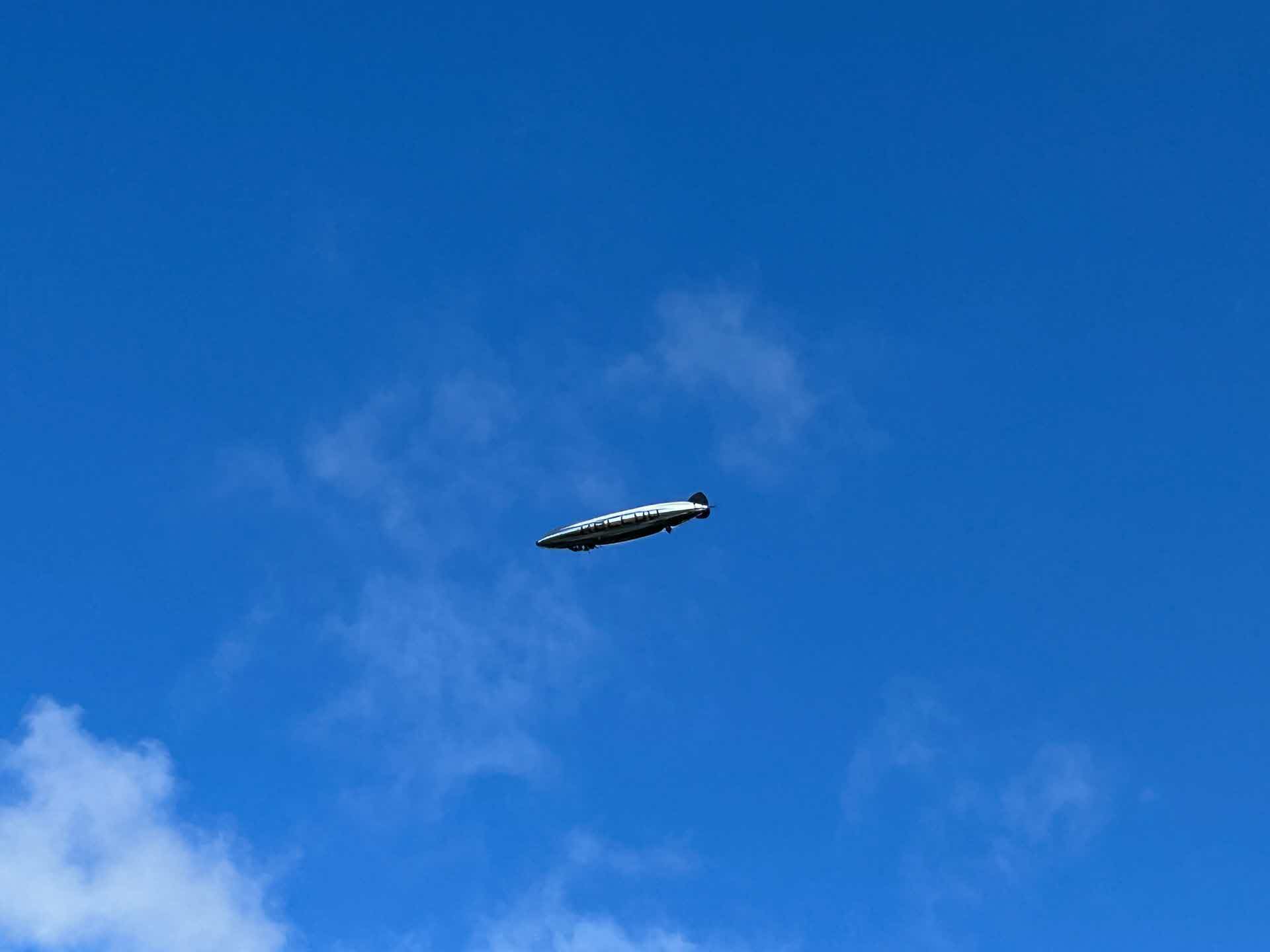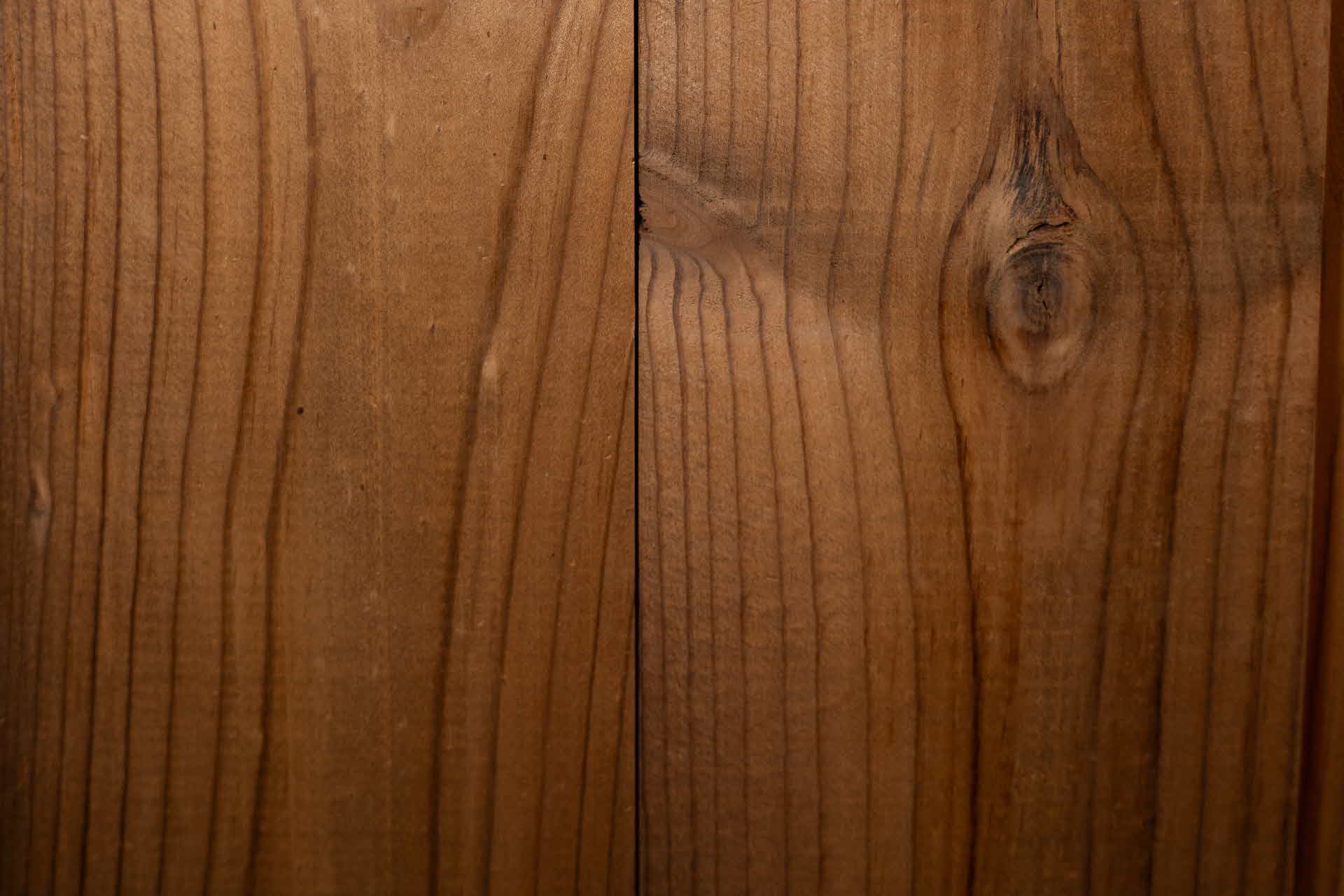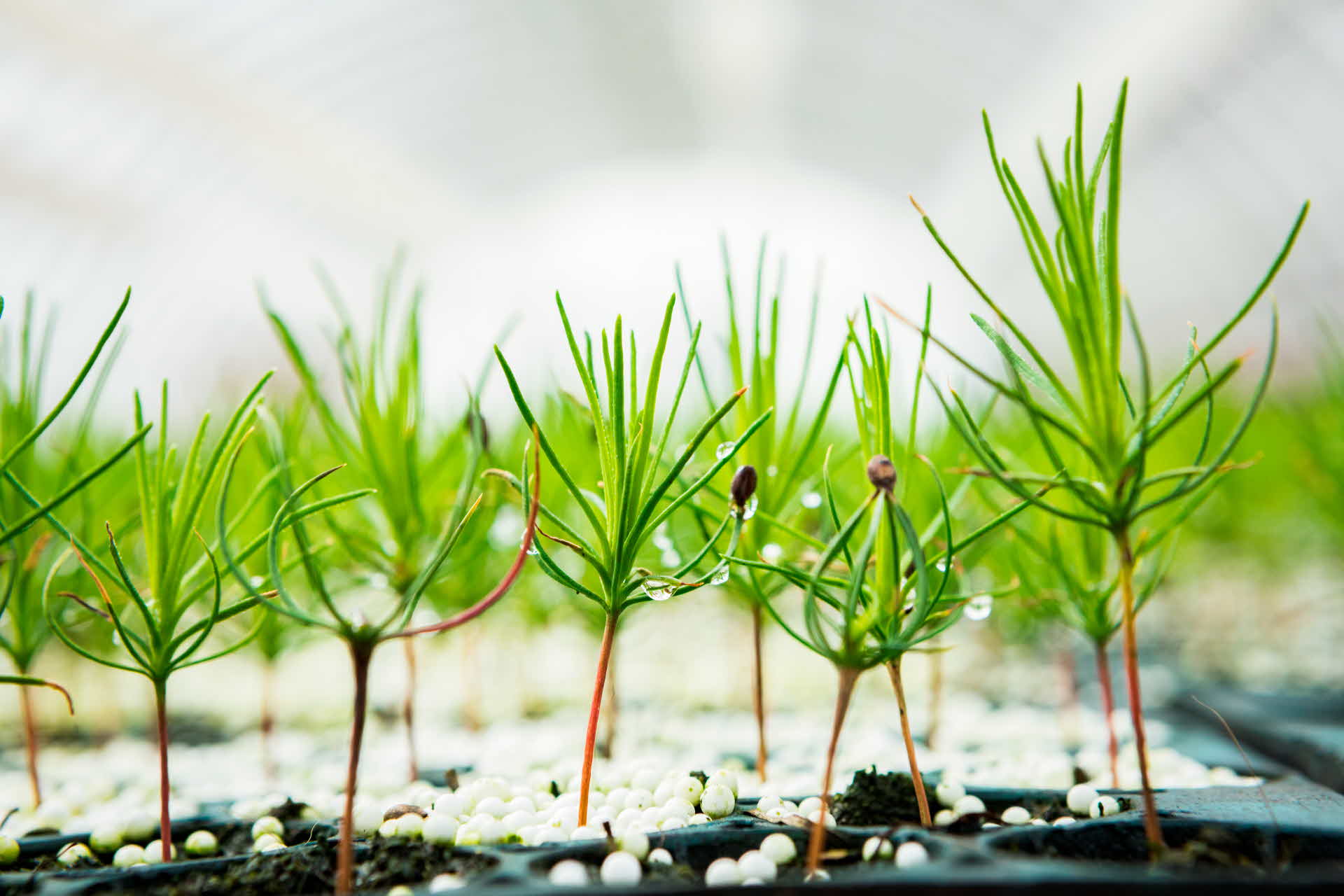
- MEDIA
- AIRSHIPS CAN REVEAL EVERYTHING ABOUT THE FOREST – TREE BY TREE
Airships can reveal everything about the forest – tree by tree
- Article
Data that provides knowledge about forests and land is a valuable tool for optimizing forestry toward even greater resource efficiency. That’s why SCA maps its forest holdings using drones, and now also an autonomous airship.
“Technological tools are an important component in obtaining better data for planning, both for individual harvests and long-term management of larger forest areas. Therefore, it’s natural to be positive toward new technology and to dare to evaluate new tools,” says Magnus Bergman, SCA Forest’s Head of Technology and Digitalization.
By gathering information about forest age distribution, tree species composition, standing biomass volume, and soil conditions, a “digital twin” of the forest can be created. SCA has long collected and processed this type of data through aerial photography and scanning using drones and helicopters.
This year, work has also begun in Västernorrland with a 12-meter-long remotely operated airship. The airship can stay airborne for up to half a day, travel long distances, and is powered by a hydrogen fuel cell.
“It has many similarities with what we already do with helicopters and drones, but the airship has some unique features in that it can cover large areas, remain airborne for a very long time, and has significantly lower operating costs than, for example, helicopter flights,” says Magnus Bergman.
The flights, operated by Finnish company Kelluu, are part of the EU project SingleTree, which aims to map and monitor trees at an individual level. The purpose is to explore how forest value chains can be optimized using information about individual trees combined with AI and remote sensing.
“As a company, we are already quite advanced in this work and have solid knowledge at the stand level, but we are very eager to get even closer and learn as much as possible about each individual tree. When we have a digital twin of the forest, work planning becomes faster, more efficient, and more accurate. It also frees up time and resources for more extensive field visits to areas we want to examine more closely for various reasons,” says Magnus Bergman.
From a broader forestry perspective, what can one hope to achieve from an EU-wide project?
“In Sweden, we’re very good at collecting data about our forests, but that’s not the case everywhere in the world – not even across the EU. A larger, shared knowledge base enables better comparisons and follow-ups between different regions, their conditions, and which forestry methods and measures work well or less well in different parts of the EU,” says Magnus Bergman.
“In our own operations, we see that more information and better planning in both the short and long term also help to maintain net growth in the forests and use the forests we have in the most resource-efficient way. If we can help achieve similar results in more regions within the EU, that’s obviously a very positive outcome for everyone,” says Magnus Bergman.



